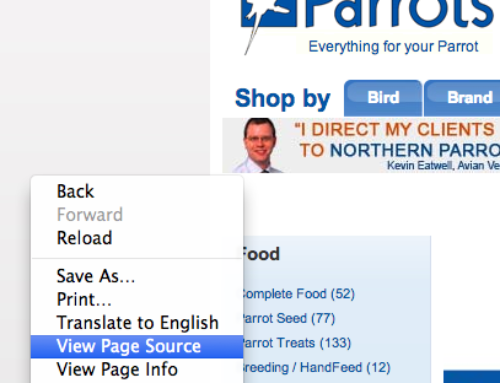So, where to start your SEO activities. (I’ll refer to the practice as SEO – you probably know that it stands for Search Engine Optimisation). There are some essential prerequisites:-
-You will need to be able to change your site’s textual content and ‘metadata’. (This is the ‘behind the scenes’ information the search engine spiders see). You may have a content management system you can use to do this or some other method of changing the content. If not, its not a problem, you’ll have to ask your website designer to put in the changes for you.
-Its important to check that your site has textual content. If its developed totally in Flash it will be a problem. Here’s a quick way of checking what the search engine spiders see at your site:-
- Open up Notepad (its usually in ‘accessories’)
- Go to the homepage of your target website
- Select all the content on the page (by typing CTRL-A)
- Copy the content onto the clipboard (by typing CTRL-C)
- Go to the notepad you have opened and type CTRL-V
The resulting text is what the search engines can read off your page. Hopefully you will have some text in the notepad, if not you may have a problem. If you drop me an email (jan@janklin.com) I’ll check it out for you.
Another check its useful to perform at this stage is whether the search engines can read all your web pages. There’s a simple way to do this, if you go to Google and type in……. site:www.yourdomain.com at the search box (obviously substituting ‘yourdomain’ with, well, your domain name). See the example below.
The resulting list is a summary of how many of your web pages Google can read (actually this command lists the pages of your website google has a record of in its database)

You can see here I have around 326 pages identified by Google (see Results 1 – 100 of about 326 from www.janklin.com at the top of the results).
So, ideally, this number needs to be equal to the number of pages you have in your site. It doesn’t matter if it doesn’t, I’ll show you later how to ensure you get more pages included. It does matter though if you are only getting your homepage listed. This means you may have a spidering issue. Drop me an email and I’ll check it for you. (jan@janklin.com).
So those are the basic tests, if all was OK you’re are ready to start the optimisation process. Here’s a checklist summary of what we’ve just gone through:-
- Check that you can change your website textual content (or your web designer will have to do it for you)
- Check you can change your website metadata – This is the Title Tag, Meta Description and Meta Keywords (again the alternative is your web designer does it for you)
- Check that your site has textual content and the search engines can read the text on your website
- Check to see that the search engines can access all, or most, of your webpages.
Drop me an email or give me a call (01928 788100) if you are unsure about any of this.
One final thing, we’ll now ask you to set up ‘Google analytics’ so you can monitor your results and traffic as we move through the process. There’s lots of functionality at Google analytics but you’ll find it an invaluable way of finding the number of people visiting your site, the keywords they use, which countries they come from and much more.

If you haven’t already got one, you’ll need a Google account before you can set up analytics, here’s a short step by step guide to getting one – Google Account Setup
Then I suggest you so sign up for Google Analytics and familiarise yourself with what it can do for you. If you can do this between now and the next lesson that will be ideal – here’s a step by step guide for the setup – Google Analytics Setup
Next time we’ll set up another important tool to kick start your SEO – Google Webmaster Central.





